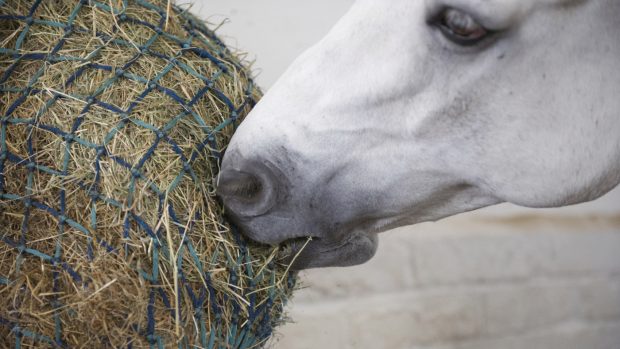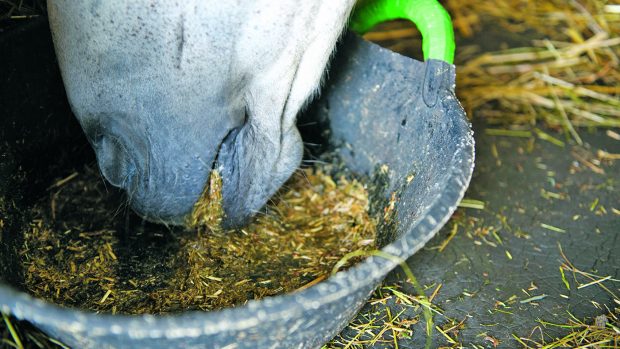More articles on feeding forage
Find a horse feed merchant
Q: Our hay supply ran out over Christmas and, in desperation, after seeing the current price per bale, we purchased some poor-quality round bales from a local farmer.
Can I steam the hay to save wasting it, or will this not help improve the quality?
JV, Essex
Sometimes hay may appear to be of bad quality, but this does not necessarily reflect its mould and fungal spore content. But it may affect its nutritional content.
“Good” hay smells fresh and is usually of a pleasant, light green colour without being weedy, or too beige (potentially heat damaged) or brown (too moist). More mature hay tends to have less nutritional content and can be more fibrous.
However, despite being of poorer quality, coarse, stalky hay doesn’t always contain excess mould spores and can actually be useful for good doers and overweight horses.
“They can be given more of this type of hay without consuming too many calories,” said Katie Williams, Dengie Horse Feeds’ senior nutritionist.
If your hay smells musty, it could have a high mould content due to baling or storage when wet. The fungus aspergillus is one of the three main fungi found in stables and is thought to be one of the main causes of equine respiratory problems.
Veterinary research laboratory the Irish Equine Centre also cites the fungus as being a
major cause of poor performance in racehorses, due to its proliferation in hay.
Steam can reduce mould
Using a hay steamer could certainly reduce the mould content within hay.
Professor Buckley, head of microbiology at the Irish Equine Centre, trialled the Happy Horse Steamer and found it to be effective at reducing mould counts, in particular aspergillus, due to the fungus’s sensitivity to heat.
You may also want to consider feeding a dietary supplement to your horse if its diet is nutritionally deficient, although the only way to truly assess whether your hay is of good or bad quality is to have it analysed.
Dengie offers a forage analysis service and its charges vary.
Tests available include those for macro-nutrient content (to measure protein, fibre and starch, for example), micro-nutrient content (eg minerals) and mould mycotoxin.
Alternatively, ask at your local agricultural supplier whether they carry out this service, or discuss the issue with the farmer who sold you the hay.
Information
Dengie www.dengie.com
Happy Horse Products www.happyhorseproducts.co.uk
This article was first published in Horse & Hound (18 February, ’10)
Looking for more articles on feeding forage?
Find a horse feed merchant near you




